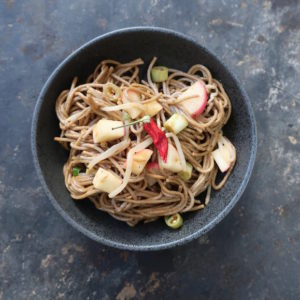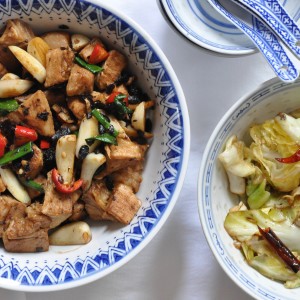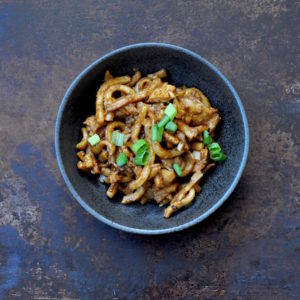Fuchsia Dunlop’s The Food Of Sichuan
2001. Life before internet. Supermarkets sold two types of soy sauce: regular and low sodium. Rice, available in boxes, was always white, parboiled, and cooked in a minute. Water chestnuts tasted of the cans they were sold in. This was the environment that greeted Fuchsia Dunlop’s Land of Plenty.

Fast forward to 2019: we ferment our own pickles, brew our own soy sauces, fuss over our sourdough starters. Our pantries bulge with half a dozen varieties of rice. Our bookshelves sag beneath the weight of cookery books from around the world. Once elusive ingredients are widely available.

In this milieu, Fuchsia Dunlop has revised and updated Land Of Plenty. Now titled The Food of Sichuan, the book has seventy additional recipes, photography by Yuki Sugiura, and a pretty red cover designed by Anna Holyph/Shutterstock.

Twenty years ago, the book met with critical acclaim but public bewilderment. Today it’s a different story.
—
The Chinese view their Sichuanese brethern with bemusement. Sichuanese women are la meizi: Spice girls. Traveling to Sichuan? According to Dunlop, you’ll be asked whether or not you fear pa la–chile heat.

Sichuanese cuisine is unquestionably fiery stuff. That said, Sichuanese food is often misunderstood by Westerners, seen as only inedibly hot and oily. These misperceptions stem from chopstick use–or lack thereof.
The Sichuanese, when eating chili-laden and/or oily dishes, pick up the food, leaving the chilis and cooking oil behind. The less coordinated among us eat with spoons or forks, inevitably ingesting oil or chili. We have a choice: either master chopstick use or serve food with slotted spoons. (Full disclosure: I am one of the klutzes who never mastered chopsticks.)
Another cultural misundersanding lies in Western preparation and consumption of Chinese meals. Whereas many Westerners focus only on spicy dishes, an authentic Chinese meal balances spicier preparations with plain vegetable stir-fries and bland soups.

And, of course, rice.

—
The Recipes
It’s rare that a recipe title makes me laugh aloud, but Lettuce Captured Alive did, and is delicious to boot. Lettuce dressed with sesame paste, Chinkiang vinegar, sesame oil, and and Sichuan peppercorns, this mild dish wouldn’t go amiss on a Western table.

Li Zhuang “Head Bowl” Meatloaf Stew is a celebratory dish served at weddings and at Chinese New Year. My meatloaf stuck to the pan, then crumbled when I tried slicing it. It thus looks nothing like the book’s photo–in fact, anyone comparing my head bowl to Ms. Dunlop’s may laugh hysterically. But it was delicous.

Dry-Fried Bitter Melon
People either love or hate this extremely bitter vegetable, pictured here with preserved vegetable. I love it.

For Dry-Fried Green Beans, prepared here with yellow wax beans, Dunlop offers an alternative to deep frying: oven roast the vegetables for 15 minutes. Watch them closely so the side resting on the pan doesn’t burn–mine almost did.

Boiled Beef Slices in a Fiery Sauce
Calling for 10-12 dried chiles, 2 teaspoons of Sichuan peppercorns, 2 tablespoons of Sichuan chile bean paste, and 2 teaspoons of ground chiles, Boiled beef slices in a fiery sauce is so spicy it almost took even me aback. (almost.) For hardcore spice freaks only.

—
As the holidays bear down on us, The Food Of Sichuan would be the ideal gift for the Chinese cook in your life. Perhaps that’s you.
Many thanks to W.W. Norton for an advance review copy.
—
Readers may order wonderfully fresh Sichuan peppercorns and other Sichuan ingredients from Mala Market .
Other Chinese ingredients are available online from 99Ranch. They also carry some cookware, including knives and woks.
For a wide variety of woks, claypots, and other Chinese cookware, visit thewokshop.com.
Note: None of the above are compensating me or are aware I am recommending them.





